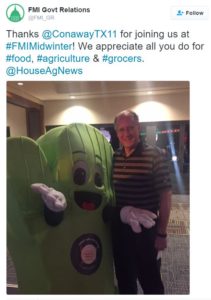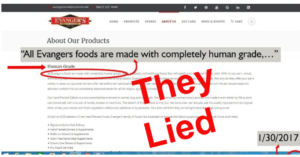Food-Navigator-USA Special Edition on Beverages
Here is another one of FoodNavigator-USA’s Special Editions, meaning collections of its articles on specific topics written mostly from the perspective of food beverage companies. This one is on trends in commercial beverages, and is highly relevant to food politics.
Special Edition: Beverage trendwatching
Few sections of the store are as dynamic as the beverage aisles. Meanwhile, the pressure to ‘clean up’ labels continues unabated. But how can we distinguish passing fads from sustainable trends? And who are the entrepreneurial companies driving innovation in this category?
- Experts weigh in on what the next ‘it’ beverage will be as sales for the once all supreme soda slow: For years, carbonated soft drinks were the go-to choice for Americans to quench their thirst and boost their energy, but in recent years the category has begun to falter – creating an opening for a bevy of innovative beverage brands to emerge, according to industry research. .. Read
- Bone broth sales more than tripled in 2016, albeit off a very small base: The bone broth category (shelf-stable and refrigerated) is pretty small in the scheme of things, but it’s growing rapidly, with US retail sales more than tripling to $19.7m in the 52 weeks to Jan 22,* fueled by a small but highly engaged set of health conscious consumers, Paleo enthusiasts and Whole30 fans, says one fast-growing player… Read
- AQUAhydrate targets ‘everyday warriors’ as premium pH segment continues to grow: Celebrity-backed AQUAhydrate has doubled its distribution over the past 18 months from around 30,000 to 60,000 outlets by appealing to a broad set of ‘everyday warriors’ it claims are seeking out more premium products and aspirational brands in the bottled water set… Read
- LIVE Beverages Founder: ‘Drinking vinegars are where kombucha was 4 years ago’: LIVE Beverages founder and CEO Trevor Ross sees great potential for the drinking vinegar category. He started the brand by launching a line of kombucha back in 2013, what he saw would “become a pretty crowded category.”.. Read
- The Dairy Aisle: La Colombe’s clever strategy to stand out in the crowded cold coffee category: Around 80% of La Colombe’s Draft Latte product is milk, so why not place it in the dairy section? That’s what ran through the mind of EVP of sales Kyle O’Brien, and retailers are going with it… Read
- Could molecular hydrogen infused water carve a niche in the functional beverages category? In regular water, hydrogen is bound to oxygen (H2O) making it “difficult for our bodies to enjoy the [antioxidant/anti-inflammatory] benefits of hydrogen,” claims the company behind Hfactor, which contends that dissolving hydrogen gas into water via a patent-pending process enables Hfactor to deliver a variety of potential health benefits… Watch now
- Drinking vinegar could be the next kombucha if it can overcome four major hurdles: While most Americans remain unfamiliar with drinking vinegar, the category is gaining traction and could be the next kombucha if manufacturers work together to promote its many benefits and uses, according to one segment player. .. Read
- State bills call for warnings about risks associated with synthetic dyes & sugar-sweetened beverages
- Two California state senate bills would mandate controversial warnings on some foods and beverages, and if enacted could start a domino effect among other like-minded states, potentially creating a patchwork of laws and compliance headache for national brands… Read
- Packaging and sweeteners have most room for innovation, says Imbibe beverage expert: What does it mean to innovate in the beverage space? We speak with a beverage trends expert to find out more… Read
- Sparkling ICE unveils $37m ad campaign, queries soda tax inconsistencies: ‘It’s a mess’: Talking Rain Beverage Co has unveiled a $37m national ad campaign that president Kevin Klock says will give Sparkling ICE a stronger brand identity – something it has historically lacked, despite its meteoric growth (estimated retail sales have surged from around $10m in 2011 to well over $600m today)… Read
- Post Mexico’s sugar-sweetened beverage tax, purchases of levied beverages have fallen 7.6%, says study: Mexico’s sugar tax may have influenced beverage purchase decisions of Mexican households in urban areas, according to a follow up study by University of North Carolina Chapel Hill researchers… Read
- Plant-based water sales predicted to double by 2020: The trend for healthy hydration is driving growth in plant-based waters, with global sales growing 21% in 2016 to reach sales of more than $2.7bn… Read
- Ag Committee weighs whether SNAP should pay for sugary drinks: Prohibiting the purchase of sugar-sweetened beverages and other “unhealthy” foods and beverages with SNAP benefits, also known as food stamps, likely would not discourage their consumption, but would be costly and difficult for retailers to implement, industry stakeholders argued on Capitol Hill last week. .. Read
- Soup-To-Nuts Podcast: Countering the impact of climate change on coffee: Every year more people wake up to coffee or use it to fuel their day, but according to a comprehensive report recently published by the Climate Institute. this early morning ritual, and everything that goes into making it possible, face significant threats from climate change. .. Listen now




 This is Jane’s astonishingly well researched account of what happened to school meals in Huntington, West Virginia—after Jamie Oliver left.
This is Jane’s astonishingly well researched account of what happened to school meals in Huntington, West Virginia—after Jamie Oliver left.